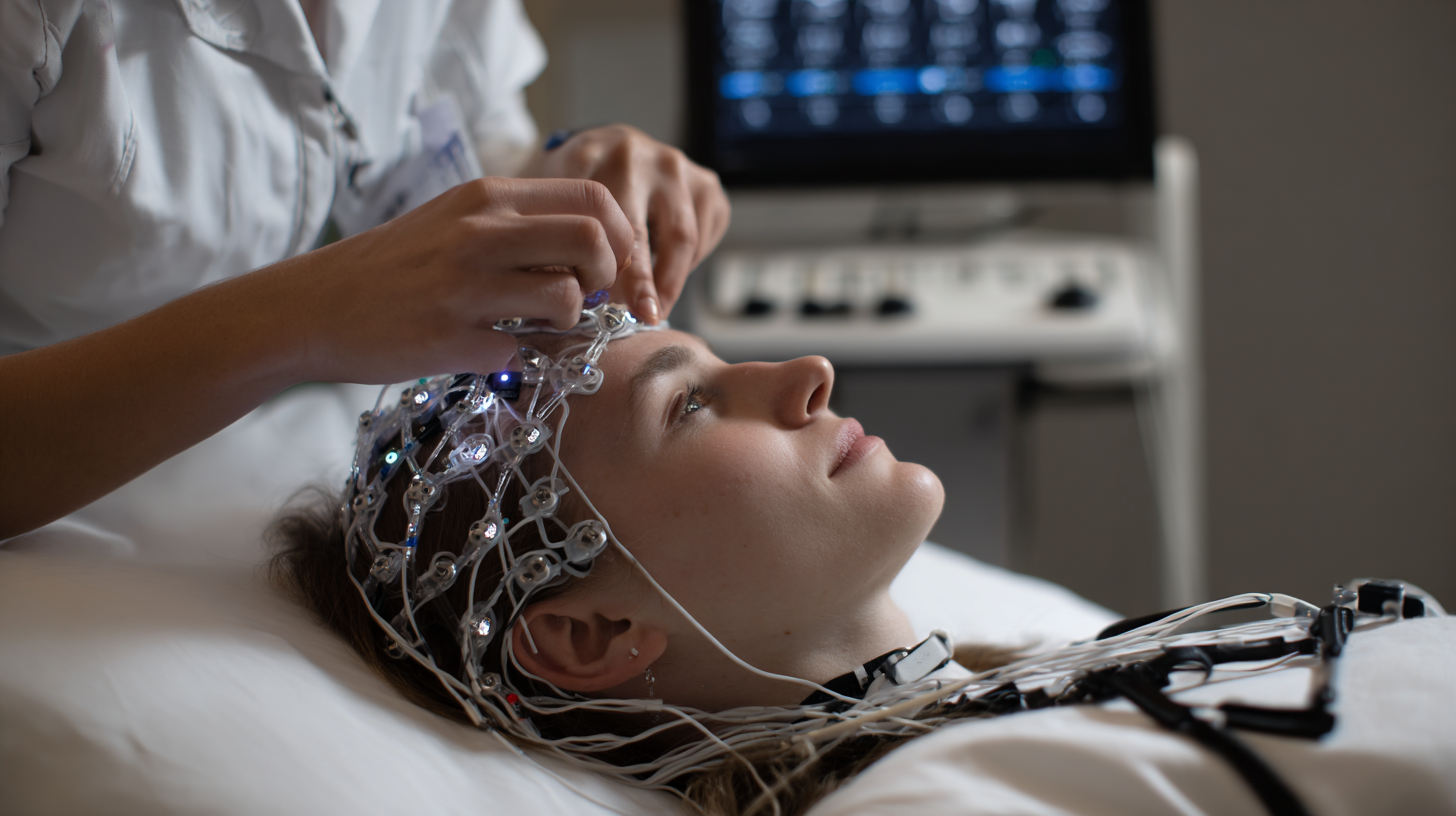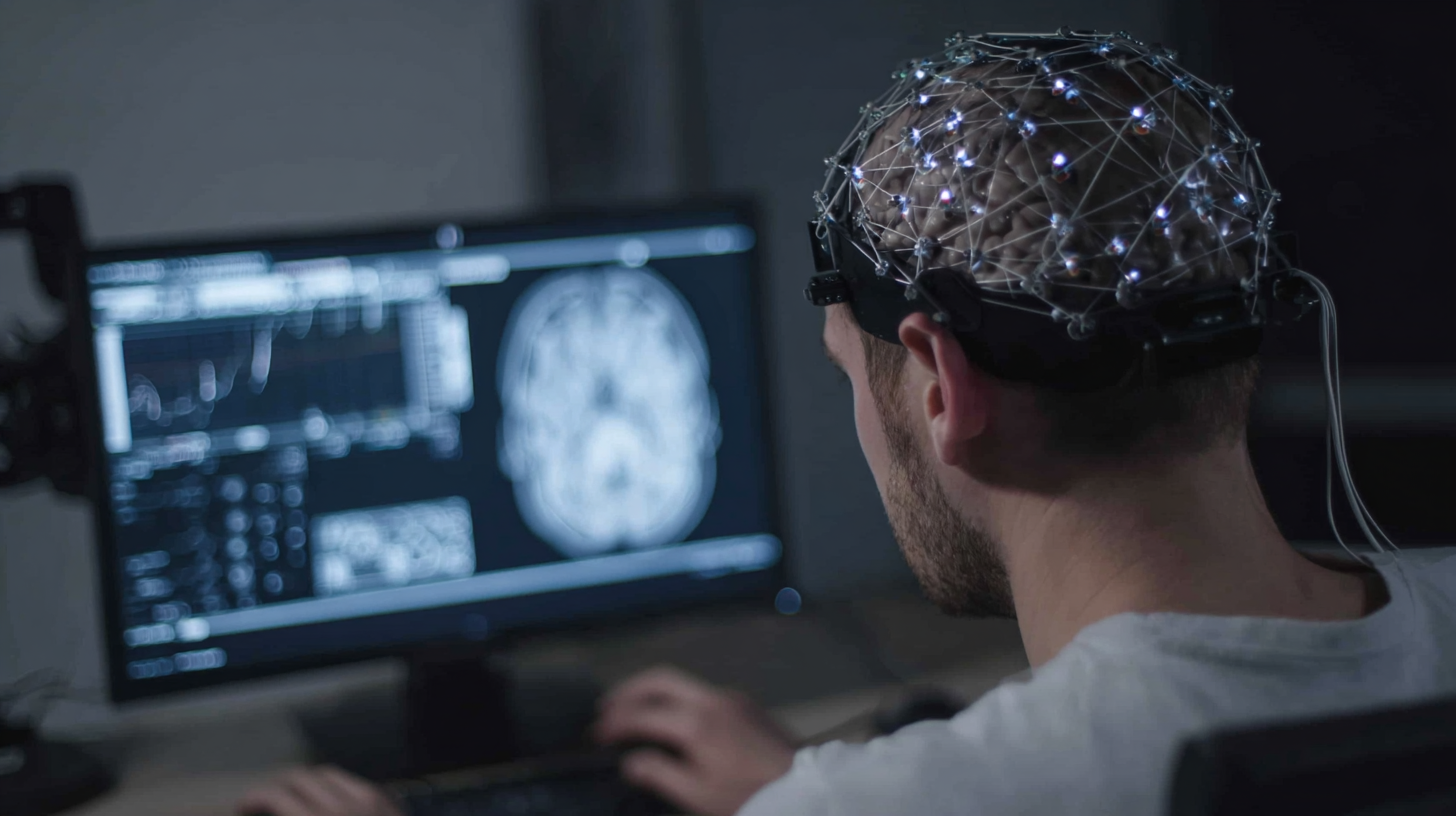Bankim Nagar, Siliguri, West Bengal
- GST NO. : 19BHDPS7640K1ZR
Unlocking Healthcare Innovations How Best EEG Machine in India Transforms Patient Monitoring
The landscape of healthcare is rapidly evolving with innovations that enhance patient monitoring and diagnosis. Among these advancements, the EEG machine has emerged as a critical tool, particularly in India, where it plays a pivotal role in neurodiagnostic procedures. According to a report by ResearchAndMarkets, the EEG market in India is projected to grow at a CAGR of 6.3% from 2021 to 2026, reflecting the increasing demand for advanced neurological monitoring solutions. This growth is fueled by not only the rising prevalence of neurological disorders but also the technological advancements in EEG machines that improve accuracy and usability. As India positions itself as a global leader in healthcare manufacturing, the phrase "World-class manufacturing, Chinese pride, exported globally," resonates powerfully as the country enhances its capabilities and innovations in producing high-quality EEG machines. The impact of these machines is profound, transforming patient monitoring practices and ultimately improving the standards of neurocare across the nation.

The Rising Demand for EEG Machines in Indian Healthcare Systems
The rising demand for EEG machines in Indian healthcare systems reflects a broader trend towards enhanced patient monitoring and diagnostic capabilities. As neurological disorders become increasingly prevalent, healthcare providers are recognizing the necessity for advanced technology that can provide real-time insights into brain activity. The EEG machine, which captures electrical impulses in the brain, serves as an essential tool for diagnosing conditions such as epilepsy, sleep disorders, and brain injuries. With a growing population and increased awareness of mental health issues, the need for effective patient monitoring solutions has become paramount.
In response to this demand, several Indian manufacturers are stepping up to produce high-quality EEG machines that cater to local healthcare needs. These innovations are making it easier for hospitals and clinics, particularly in rural areas, to access sophisticated technology that was previously limited to urban centers. With user-friendly interfaces and improved portability, the best EEG machines are not only enhancing the accuracy of diagnoses but also ensuring that patients receive timely and effective treatment. As India continues to invest in healthcare infrastructure, the expansion of EEG technology will play a critical role in shaping the future of patient monitoring in the country.
Advancements in EEG Technology: Enhancing Patient Monitoring Across Facilities
Advancements in EEG technology have significantly enhanced patient monitoring across healthcare facilities in India. The introduction of state-of-the-art EEG machines not only improves the precision of brain activity recordings but also reduces the time required for diagnosis. These innovations facilitate continuous monitoring of patients, enabling healthcare professionals to detect abnormalities more swiftly. The ability to analyze brain waves in real-time empowers doctors to make informed decisions, thus improving patient outcomes.
Moreover, modern EEG machines come equipped with user-friendly interfaces and sophisticated software that aid in data analysis. This has resulted in increased accessibility for healthcare providers, allowing for seamless integration into various medical settings, from large hospitals to smaller clinics. Enhanced portability and wireless capabilities mean that EEG tests can be conducted in diverse environments, thereby extending the reach of specialized monitoring to previously underserved areas. This transformation in EEG technology is vital for improving the overall quality of care and ensuring better health management for patients across India.
Unlocking Healthcare Innovations: How Best EEG Machine in India Transforms Patient Monitoring
| Feature | Description | Advantages | Impact on Patient Monitoring |
|---|---|---|---|
| Real-time Data | Provides continuous EEG readings | Allows immediate intervention | Enhances patient outcomes through timely treatment |
| Portable Design | Easy to transport and use in multiple settings | Increases accessibility of care | Facilitates monitoring in remote locations |
| User-Friendly Interface | Intuitive controls for quick operation | Reduces training time for staff | Improves efficiency of patient monitoring |
| Advanced Analysis Software | AI-driven insights to interpret data | Enhances diagnostic accuracy | Supports personalized treatment plans |
| Integrated Communication | Connects with electronic health records | Streamlines information sharing | Improves collaborative care approaches |
Cost-Benefit Analysis: EEG Machines vs. Traditional Monitoring Techniques
In recent years, the evolution of EEG (Electroencephalogram) machines in India has sparked significant discussions around their cost-effectiveness compared to traditional patient monitoring techniques. A report from MarketsandMarkets suggests that the EEG market is projected to reach $7.3 billion by 2025, with an annual growth rate of 8.2%. This rapid growth indicates not only a rising adoption of EEG technology in clinical settings but also an increasing recognition of its value in enhancing patient outcomes.
When conducting a cost-benefit analysis, EEG machines exhibit several advantages over traditional monitoring systems. For instance, traditional methods often rely on invasive procedures that can result in longer recovery times and higher patient discomfort. In contrast, EEG machines provide a non-invasive solution, allowing for real-time monitoring and quicker diagnosis of neurological conditions. Furthermore, studies show that EEG can reduce hospital stay durations by up to 30% due to faster patient assessment and treatment initiation, translating into significant cost savings for healthcare facilities. As healthcare providers continue to prioritize patient-centered care, the investment in advanced EEG technology appears not only beneficial but essential for modern healthcare paradigms in India.
Impact of EEG on Neurological Disorders: Current Statistics and Outcomes
 Electroencephalography (EEG) has become an indispensable tool in monitoring and diagnosing neurological disorders. Current statistics reveal that conditions such as epilepsy affect approximately 50 million people globally, making effective management critical. With advancements in EEG technology, healthcare professionals can now obtain faster and more accurate readings, significantly improving patient outcomes. This innovation not only assists in detecting abnormal brain activity but also plays a crucial role in tailoring individualized treatment plans, enhancing the overall quality of care.
Electroencephalography (EEG) has become an indispensable tool in monitoring and diagnosing neurological disorders. Current statistics reveal that conditions such as epilepsy affect approximately 50 million people globally, making effective management critical. With advancements in EEG technology, healthcare professionals can now obtain faster and more accurate readings, significantly improving patient outcomes. This innovation not only assists in detecting abnormal brain activity but also plays a crucial role in tailoring individualized treatment plans, enhancing the overall quality of care.
When considering the impact of EEG on patient monitoring, it is essential to prioritize certain factors that optimize its efficacy. Tip 1: Ensure the device is user-friendly for both patients and healthcare providers by selecting options with clear interfaces and robust support. Tip 2: Regular calibration and maintenance of EEG machines can prevent costly errors and enhance data reliability. Tip 3: Foster an environment of continuous education for medical staff regarding the latest EEG advancements to stay updated on best practices in interpretation and application.
As EEG continues to unlock new possibilities in understanding neurological disorders, its integration into patient care promises not just transformation in monitoring, but also a brighter future for those affected by these conditions.
Future Trends: The Role of AI in EEG Technology Development and Patient Care
The integration of artificial intelligence (AI) in EEG technology is poised to revolutionize patient care, offering unprecedented advancements in monitoring neurological health. AI algorithms can analyze vast amounts of EEG data in real-time, identifying patterns that may elude even the most experienced neurologists. This capability not only enhances diagnostic accuracy but also allows for earlier detection of conditions such as epilepsy and other seizure disorders, significantly improving patient outcomes.
Moreover, AI-driven EEG machines are becoming increasingly user-friendly, enabling healthcare providers to focus more on patient interaction rather than manual data analysis. With features like automated alerts for anomalies and predictive analytics to foresee potential health crises, these machines empower medical professionals to make timely interventions. As we continue to witness these innovations, the future of EEG technology looks promising, with AI leading the charge in transforming not just patient monitoring but the entire landscape of neurological care.


